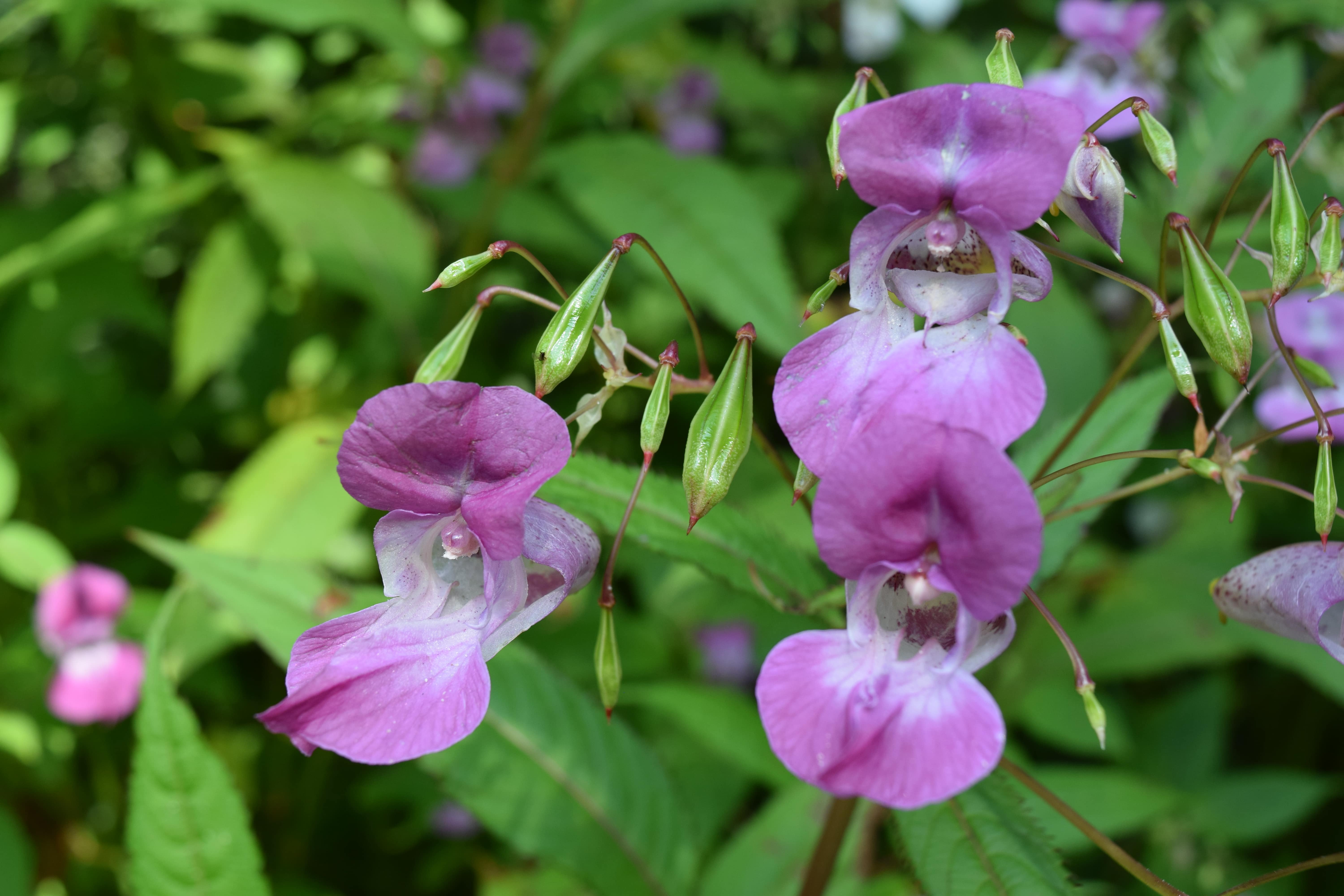Himalayan Balsam
Himalayan balsam (Impatiens glandulifera) is a tall, attractive, annual herb with explosive seed heads. Although easy to identify as a mature plant with its pink-purple flowers, fleshy stem and characteristic leaves, the seedlings and last year’s dead stems of this annual are more difficult to spot.
Introduced as a garden plant in the early 19th century and first recorded in the wild in 1855. Often favoured by the general public for its aesthetic appeal and is still deliberately planted on occasion. Now widespread in the UK, especially along urban rivers. Spreads solely by seeds, which are small and easily carried by wind or water.
Himalayan Balsam out-competes native species in ecologically sensitive areas. Where it grows in dense stands along river banks it can impede flow at times of high rainfall, increasing the likelihood of flooding. Die back of extensive stands over winter can leave river banks bare and exposed to erosion.

Himalayan Balsam Control
Non-Chemical Control
Cutting
Cut at ground level using a scythe, machete, flail or strimmer before the flowering stage in June. Cutting earlier than this will promote greater seed production from plants that re-grow. Cutting should be repeated annually until no more growth occurs.
Pulling
Shallow-rooted plants can be pulled up very easily and disposed of by burning, or composting unless seeds are present.
Grazing
Grazing by cattle and sheep is effective from April throughout the growing season. It should be continued until no new growth occurs.
Chemical Control
Glyphosate
Treat with a weed wipe in mixed stands, or by foliar spray in dense stands, before flowering. If all plants are controlled, then spraying should only be required for two to three years.

In general
It is essential to establish vegetation quickly after control measures have been applied. A dense grass sward is ideal as it tends to discourage seed germination. Control should be undertaken on a catchment basis, working from the upstream end to prevent seed recolonisation.
For more information on how to identify and control Himalayan Balsam please visit the GB Non-Native Species Scretariat webpage here
If you would like to host your own balsam bash there is information and resources to help you do this that can be downloaded here.








